
Fahrenheit 451 is a 1953 dystopian novel by American writer Ray Bradbury. It presents an American society where books have been personified and outlawed and "firemen" burn any that are found. The novel follows in the viewpoint of Guy Montag, a fireman who soon becomes disillusioned with his role of censoring literature and destroying knowledge, eventually quitting his job and committing himself to the preservation of literary and cultural writings.
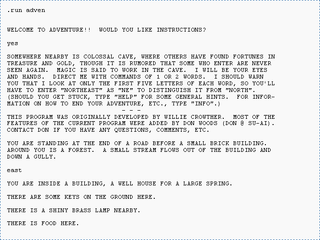
Interactive fiction, often abbreviated IF, is software simulating environments in which players use text commands to control characters and influence the environment. Works in this form can be understood as literary narratives, either in the form of interactive narratives or interactive narrations. These works can also be understood as a form of video game, either in the form of an adventure game or role-playing game. In common usage, the term refers to text adventures, a type of adventure game where the entire interface can be "text-only", however, graphic text adventures still fall under the text adventure category if the main way to interact with the game is by typing text. Some users of the term distinguish between interactive fiction, known as "Puzzle-free", that focuses on narrative, and "text adventures" that focus on puzzles.

Ray Douglas Bradbury was an American author and screenwriter. One of the most celebrated 20th-century American writers, he worked in a variety of genres, including fantasy, science fiction, horror, mystery, and realistic fiction.

Enchanter is a 1983 interactive fiction computer game written by Marc Blank and Dave Lebling and published by Infocom. The first fantasy game published by Infocom after the Zork trilogy, it was originally intended to be Zork IV. The game has a parser that understands over 700 words, making it the most advanced interactive fiction game of its time. It was Infocom's ninth game.

The Lurking Horror is an interactive fiction game released by Infocom in 1987. The game was written by Dave Lebling and inspired by the horror fiction writings of H. P. Lovecraft. The original release was for MS-DOS, Apple II, Atari ST, Atari 8-bit family, and Commodore 64. It was Infocom's 26th game and the only in the horror genre. Infocom rated it as "Standard" in terms of difficulty. Later, it was ported to the Amiga with the addition of sound effects, making it the first Infocom adventure with that feature.

Spinnaker Software Corporation was a software company founded in 1982 known primarily for its line of non-curriculum based educational software, which was a major seller during the 1980s. It was founded by chairman Bill Bowman and president C. David Seuss.

Fahrenheit 451 is an interactive fiction game released in 1984 and based on the 1953 novel of the same name by Ray Bradbury. Originally released by software company Trillium, it was re-released in 1985 under the company's new name Telarium.

The Scoop is a mystery adventure game published by Telarium, a subsidiary of Spinnaker Software, in 1986 for Apple II and rereleased by Spinnaker Software in 1989 for DOS. The plot is based on the collaborative detective novel of the same name, written in 1931 by Agatha Christie, Dorothy L. Sayers, E. C. Bentley, Anthony Berkeley, Freeman Wills Crofts, and Clemence Dane.
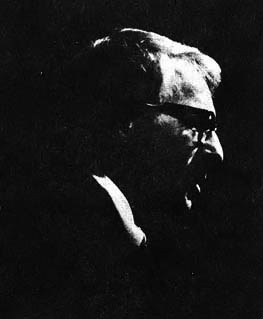
The following is a list of works by Ray Bradbury.
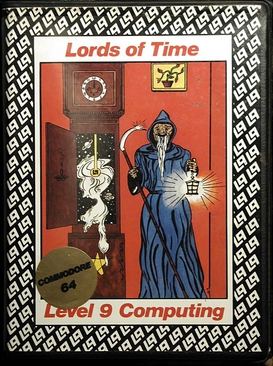
Lords of Time is an interactive fiction computer game designed by Sue Gazzard and released by Level 9 Computing in 1983. Originally purely a textual adventure for 8-bit microcomputers, the game was later released as part of the Time and Magik compilation where graphics were added for all floppy disk versions. Like all Level 9 adventures of its time, it was written in the in-house A-code language which was platform-independent.

Lancelot is a text adventure game by Level 9 released in 1988. It features static graphics on some platforms. The plot focuses on Lancelot's quest to find the Holy Grail.
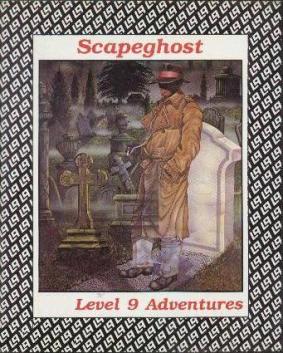
Scapeghost is a text adventure published by Level 9 Computing in 1989. It was the last text adventure game released by the company.

Amazon is an interactive fiction graphic adventure game. The game was published by Telarium in 1984 and written by Michael Crichton.
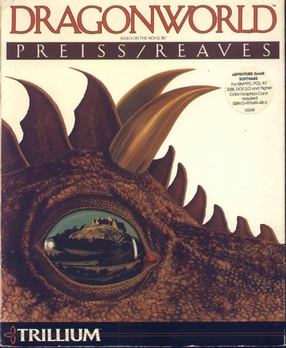
Dragonworld is an interactive fiction game with graphics. The game was published by Telarium, a subsidiary of Spinnaker Software, in the year 1984. The game was based on the novel written in 1979 by Byron Preiss and Michael Reaves; text for the game was written by J. Brynne Stephens.

Perry Mason: The Case of the Mandarin Murder is an interactive fiction computer game with graphics. The game was published by Telarium, a subsidiary of Spinnaker Software, in 1985.

Rendezvous with Rama is an interactive fiction game with graphics published by Telarium, a subsidiary of Spinnaker Software, in 1984. It was developed in cooperation with Arthur C. Clarke and based upon his 1973 science fiction novel Rendezvous with Rama.

Nine Princes in Amber is an interactive fiction video game with graphics. The game was published by Telarium, a subsidiary of Spinnaker Software, in 1985. The game is based upon the fantasy novels Nine Princes in Amber and The Guns of Avalon by Roger Zelazny.

Shadowkeep is a first person role-playing video game and interactive fiction video game with graphics. The game was published by Telarium, a subsidiary of Spinnaker Software, in the year 1984. It was the first computer game to be novelised.
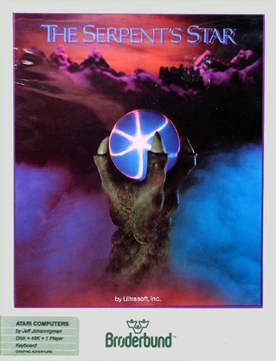
The Serpent's Star is an interactive fiction game with graphics. It was developed by Ultrasoft and published by Broderbund for the Apple II in 1983 as the sequel to The Mask of the Sun. Ports to the Atari 8-bit family (1984) and Commodore 64 (1985) followed.
Windham Classics Corporation was a subsidiary of Spinnaker Software. The corporation was founded in 1984 and went defunct circa 1985/86 or later. The headquarters were in Cambridge, Massachusetts, USA.


















